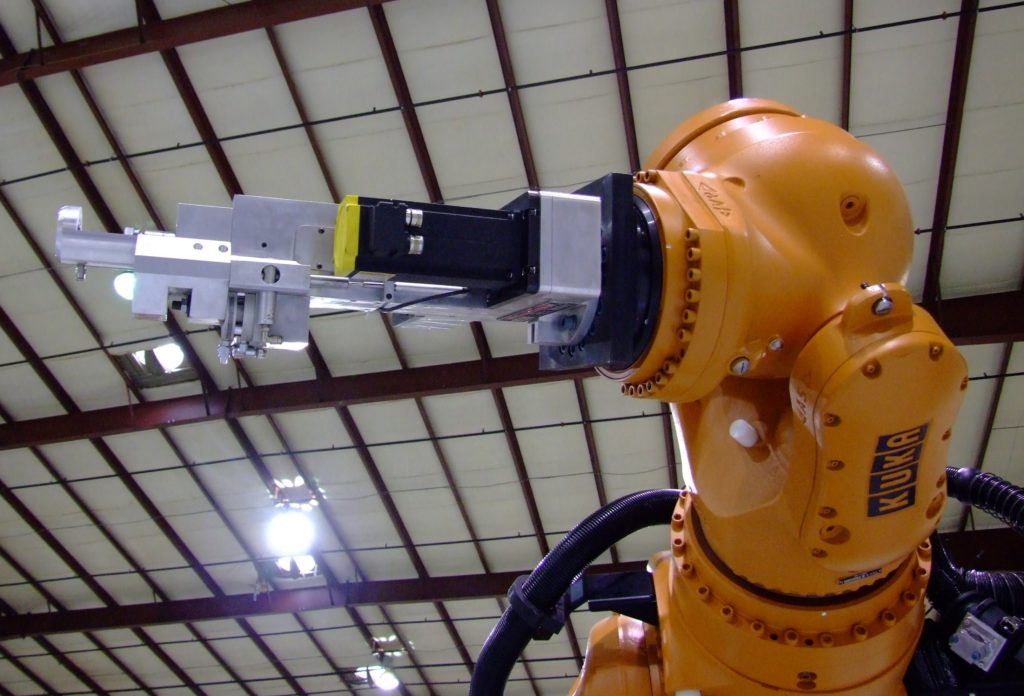What Makes a Good End Effector?
The term end effector, strictly speaking, means the last link of the robot. At the endpoint, tools are attached. End effectors, or End of Arm Tooling (EOAT) can be seen across many industries as the part of a robot that interacts with the work environment. When you are selecting the right end effector for your application, there are several characteristics that require consideration:

- Grip Force, a term used when describing claw grippers, is the maximum effort applicable by the end effector representing the force the fingers can apply on a part. Pneumatic or magnetic end effectors would use suction or magnetic force instead. Grip force matters especially as slippage prevention during movement.
- Speed and Stroke– It is still the tool at the end of the robotic arm that will make the difference in production yield. With that being said, using robotic end effectors allow engineers to choose the right gripper for the job, so strength, speed, or configurations are best formulated to the job at hand.
- Material Handling, one of the main challenges for manufacturers, can be complex. For an end effector to be effective, it must be able to handle the parts as intended. Handling challenges, classified by Clay Flannigan from Southwest Research Institute, can give you an idea of what must be considered when selecting the right end effector for your application.
- Structured: the part that must be gripped by the end effector is in a predetermined location and orientation.
- Semi-structured: the part is on a pane with no assigned location or orientation, but there is no overlapping of parts. The handling is done with the help of a vision system under controlled lighting.
- Bin picking: a single object is piled, overlapping in a box. Vision technologies can solve this puzzle, but controlled lighting is required.
- Unstructured material handling: Robot must choose the correct part from different types of objects, overlapping and randomly oriented. Humans are still the best choice for this type of part selection in the manufacturing process.
- Weight is a design feature that might vary due to the specific process which will be used and the object to be machined. As with all of the factors, the end use should be considered when determining which Robotic End Effector will fit. Zagar end effectors are engineered with adaptability in mind. Visit https://www.zagar.com/robotic-end-effectors/ for more information specific to your intended use.
- Repeatability – whether a shop produces one product, or is job oriented, an end effector must be able to repeat the same task over and over, using the same position and orientation, or pose. This will generally have an effect on the next topic, accuracy.
- Accuracy is the ability to correctly obtain the same results as the requested task. In other words, placing the drill or tap in exactly the spot it needs to drill or tap, is as important to consider as repeatability. Zagar uses end of arm tooling that ensures precision.
Zagar end effectors are designed to work with multiple and varied applications. We are proud of the precision and efficiency with which our machines drill and tap holes in a broad spectrum of industries, such as aerospace, appliance, automotive and more. Because Zagar EOATs are constructed of high quality materials, we are confident in their repeatability and endurance. Call us at (216) 731-0500 for more information on the full spectrum of precision machining Zagar’s robotic end effectors cover, including drilling, tapping, milling, trimming, counter boring, facing, reaming combination drill-tap and more.
